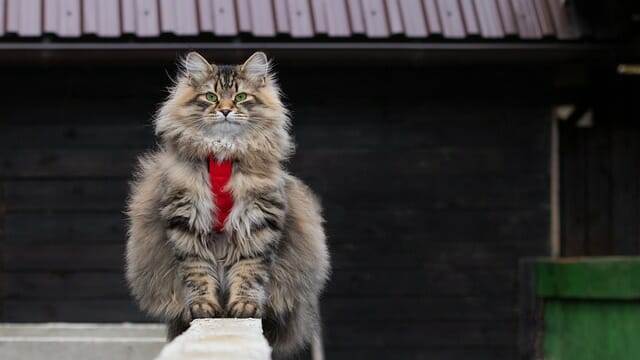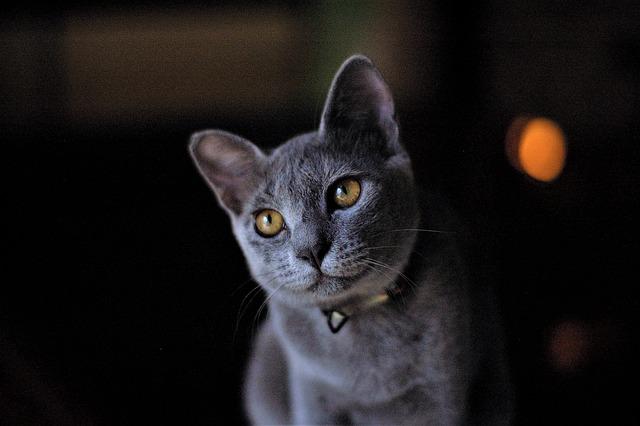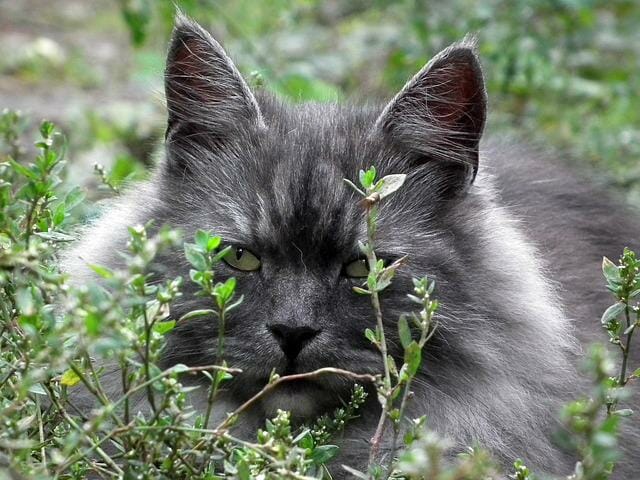Russian Blue vs. Siberian Cat: The Similarities and Differences Between Russian Blue and Siberian Cats
Russian Blue has a different blue-grey coat, which is short, dense, and plush. They have green eyes, a triangular head, and graceful, slender bodies. On the other hand, Siberian cats have thicker, longer coat that comes in various colors, including white, black, red, and blue. They have round eyes, broad heads, and a muscular build.
Also, Russian Blue cats are usually quiet and reserved but can be very affectionate with their owners. They are intelligent, curious, and playful but shy or anxious around strangers. Meanwhile, Siberian cats are friendly and outgoing and are often described as dog-like in their behavior. They are intelligent, playful, affectionate, and get along well with children and other pets.


Table of Contents
The Similarities Between Russian Blue and Siberian Cats
Intelligence and Curiosity
Russian Blue cats are intelligent, curious, and quick learners. They are known for their problem-solving skills and ability to figure out how to open doors and cabinets. They are also very observant and have a good memory. They love to play, especially with interactive toys that challenge their minds.
Similarly, Siberian cats are intelligent, curious, and love to explore their surroundings. They are also known for their problem-solving skills and ability to learn tricks and commands. In addition, they enjoy interactive playtime and can often be found playing with toys or exploring their surroundings.
In addition to their intelligence, both breeds have a strong sense of curiosity. They are always exploring their environment, whether investigating a new toy or checking out a new room in the house. They are also very alert and aware of their surroundings, making them great watchful companions.
Their intelligence and curiosity also make them easy to train. Both breeds respond well to positive reinforcement training and can learn various tricks and commands. They are eager to please their owners and love to learn new things.
Less Risk of Cat Allergies
Russian Blue and Siberian cats are less hypoallergenic. They share a similarity in both breeds that produces fewer allergens than other cat breeds, although no cat is truly hypoallergenic.
The primary allergen associated with cats is a protein called Fel d 1, produced in the skin’s sebaceous glands and found in their saliva and urine. When a cat grooms itself, it spreads the protein onto its fur, which can then be transferred to clothing, carpets, and other surfaces in the home.


When people come into contact with such allergens, they may experience symptoms such as sneezing, itching, watery eyes, and other respiratory problems. The Russian Blue and Siberian cats produce less of this protein than other breeds, which may make them more tolerable for people with cat allergies.
However, it is important to note that no cat is completely hypoallergenic and that individuals with severe allergies may still experience symptoms when exposed to these breeds. Other allergens, such as dust and pollen, may be present in a cat’s environment, exacerbating allergy symptoms.
Loyalty
Russian Blue cats are known for their sweet and affectionate personalities. They are loyal and devoted to their owners and often follow them around the house, seeking attention and affection. They are also known for their sensitivity and can pick up on their owners’ moods and emotions, providing comfort and support when needed.
Similarly, Siberian cats are known for their affectionate and loving personalities. They are loyal to their owners and form strong bonds with their human family members. They enjoy spending time with their owners and often follow them around the house, seeking attention and affection. They are also known for their playful and energetic personalities, which can make them great companions for families with children.
In addition to their loyalty to their owners, both breeds are known for their social nature and love of attention. They enjoy being part of the family, thrive on human interaction, and can be very vocal, especially when seeking attention or affection.
The Differences Between Russian Blue and Siberian Cats
Physical Appearance
Russian Blue cats have a distinctive appearance, with a short, dense, and plush coat that is a uniform blue-gray color. Their eyes are also striking, with an intense green color accentuated by their silver fur, and they have slender and elegant bodies with long, graceful necks and wedge-shaped heads.
In contrast, Siberian cats have a much more robust and muscular appearance. They have thick, long coats in various colors, including black, white, tabby, and more. Their coat is designed to protect them from the cold Siberian climate, and they have a dense undercoat that keeps them warm in the winter. Their eyes are large and round, with colors that range from green to gold.
Temperament


Russian Blue cats are known for their sweet and affectionate personalities. They are typically quiet and reserved, preferring to observe their surroundings before moving. They are also sensitive and can pick up on their owners’ moods and emotions, providing comfort and support when needed. Russian Blues are generally low-maintenance cats who are content with spending time alone or with their owners.
On the other hand, Siberian cats are known for their outgoing and social personalities. They are friendly and enjoy interacting with their owners and other pets in the household. They are also known for their playful and energetic personalities, which can make them great companions for families with children.
Another difference in temperament between the two breeds is their level of vocalization. Russian Blue cats are quiet and communicate through body language and subtle vocalizations. In contrast, Siberian cats are more vocal and not afraid to express themselves with loud meows and purrs.
In terms of adaptability, both breeds are relatively adaptable to new environments and changes in routine. However, Siberian cats may be better suited to households with children or other pets, as they are generally more outgoing and social.
